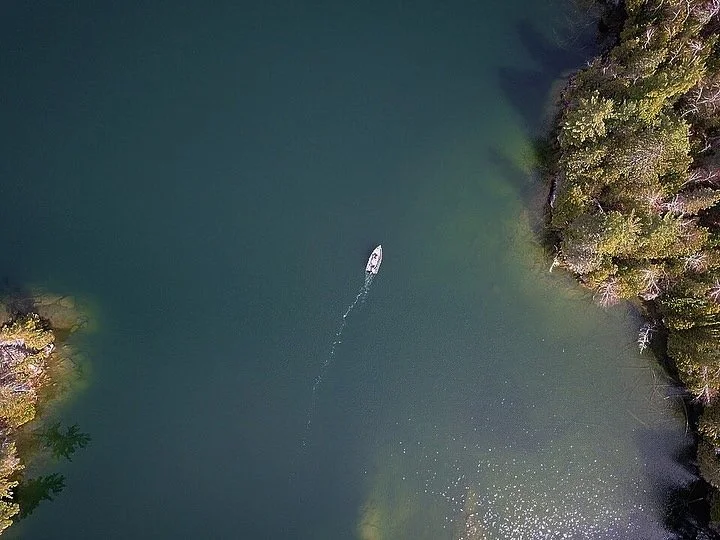Location, Depth, Flies
Still sometimes I catch myself chasing fly patterns rather than the two important steps which come before it. Ultimately, whether you have the right flies and right depth but you’re fishing in an area vacant of fish, I hope the beer is cold. Determining where the fish are is the first thing you must do in order to start putting fish in the bottom of the net.
How do you find the fish in a lake you’ve never fished before?
Let’s say you have no prior knowledge of this lake, no local intel, no depth chart and no fish finder. Knowing the species would at least be a good start and if it’s stocked or wild. Look for a good place to start, you’re looking for drop offs, rising fish, bug life and underwater structure. Set up a drift upwind of where you’d like to canvas and use the wind to cover a quadrant of the lake. Make a mental note of the water you fished and if you were unsuccessful and if you saw no signs of life, pick up and relocate. Constantly be scanning your surroundings, watching other boats to see if they’re catching fish, the water surface for bugs and rising fish, any bird life that would indicate a hatch in a certain area of the lake, the shoreline and what it tells you about the slope into the water and potential depths. You’re always learning and using every cast as a process of elimination. Once you’ve gathered all those mental notes by watching the sun, the clouds, barometric pressure, water temperature and covered a large part of the lake, or for very large lakes, a large portion within that sample size, its time to change lines.
Fly line choice is usually pretty standardized for myself unless there is very obvious and visible surface activity. In most cases, my starting line is a Airflo Di5 Sweep (5”/sec). Reason being, the design of this fly line allows me to “sweep” a number of varying depths on a single cast. The longer you count down your line at the beginning of the cast, the deeper your flies will swim and the more vertical water you will cover. Again, by the process of elimination, depending on when a fish takes along the retrieve I am able to develop a pattern as to what depth the majority of the fish are feeding in. I can then change my fly line to adjust to that depth allowing my flies to stay in “the zone” longer. If the fish are taking in the middle of the retrieve, I know I need to change to a Di7 (7”/sec) to get down to them quicker and stay in that water column. Alternatively, if they’re taking shortly after the flies hit the water, I can adjust to fast or slow intermediate which sinks 0.5”-1.5”/sec. One key thing to note when you start off with your first line, you need to be systematic about how deep you’re fishing every cast and keep varying your retrieves to present the flies at different speeds and cadences. For example, count down in increments of 5 seconds every cast in order to cover depths effectively.
You can refer to the Countdown Chart in a previous blog as a cheat sheet.
Once you have a reasonable sense of the depth and acquired line to induce takes, only then should you start adjusting your fly selection. Again, I have a pretty standardized team of 3 flies that I’ll fish with confidence almost anywhere. If I’m not getting them consistently at a depth I know they’re feeding at, I will adjust according to my experience and the information I’ve gathered throughout the day so far. If the fish are taking softly I’ll adjust to more natural small patterns and potentially go down to a 1 or 2 fly set up. If they’re picking the same fly out of the cast every time, maybe I’ll try putting on another one higher or lower on the team of 3 flies. Sometimes that doesn’t work because the way the flies were fishing with the original set up wasn't the same or it ended up sinking faster. Theres so much to consider but be sure to note note the moments of success in order to refer back to how you adjusted to increase your catch rate.
Work in this format and you’ll be sure to have a better day on the water. You’ll learn more from your time rather than getting frustrated at the fact they didn’t like the wooly bugger with the fancy new dubbing you tied the night before.



